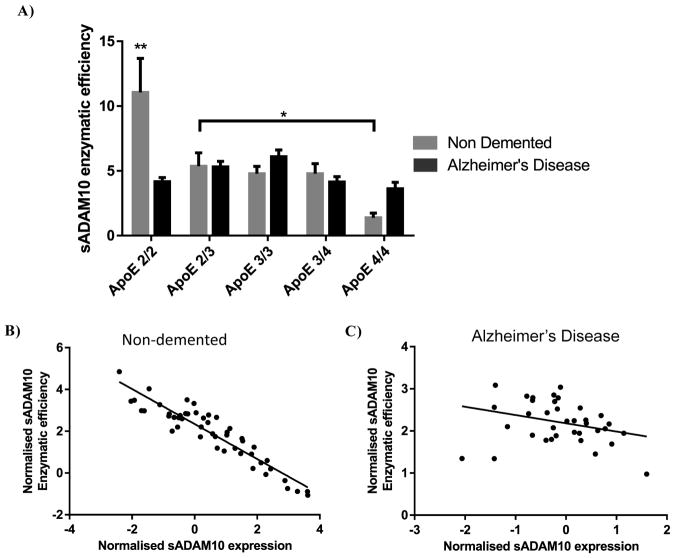Fig. 4.
The enzymatic efficiency of sADAM10 is APOE dependent (F (4, 77) = 4.816; p<0.005) and dependent on an interaction between disease state and APOE genotype (F (4, 77) = 4.551; p<0.005) (A). In the ND samples, the APOE2/2 genotype demonstrated significantly higher sADAM10 enzymatic efficiency compared to all other ND APOE genotypes as well as the APOE2/2 AD samples (p<0.01). (B) Enzymatic efficiency of sADAM10 against sADAM10 expression demonstrated highly significant inverse correlation in the ND group, while no such correlation was observed in the AD group (ND r =−0.93, n =47, p<0.0001; AD r =−0.31, n =37, p > 0.05). Enzymatic efficiency data presented as enzymatic efficiency of ADAM10 (ADAM10 activity/ sADAM10 expression). Statistical significance was determined by Two-Way ANOVA followed by Sidak post-hoc analysis. Correlation data presented as normalised enzymatic efficiency of ADAM10 against normalised ADAM10 expression. *p<0.05; ** p<0.01; *** p<0.001; **** p<0.0001.

